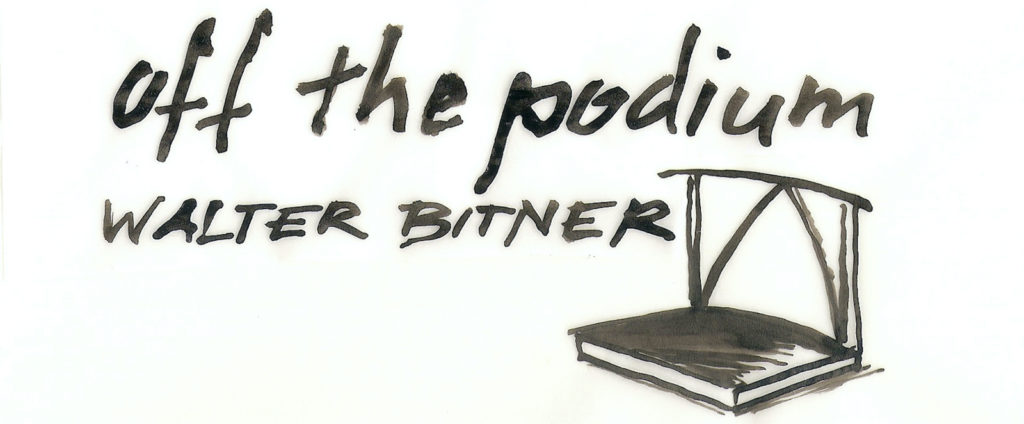
Solfège: Part 5: Solfège Exercises
Solfège: Part 6
Solfège with Amadeus
In January of 2012 I decided to teach all of my high school choirs at Nashville School of the Arts as many choruses from the Mozart Requiem as we could learn in four months and to then perform them en masse at our spring concert in May with Music City Youth Orchestra, of which I was also the music director. This was the beginning of what became known as the NSA Festival Choir.
I know: what was I thinking? I could write a lot about that spring – and perhaps some day I may – but for now I will just stay close to the solfège discussion and state that for most of us it was a very positive experience, the students and I learned so much, and it was an experience that none who were involved will ever forget. I survived.
In the end we learned seven choruses:
Introitus: Requiem
Dies Irae
Rex Tremendae
Confutatis
Lacrimosa
Domine Jesu
Hostias
We also learned Freddie Mercury’s Bohemian Rhapsody and the closing chorale Du Heilige Brunst from Sebastian’s Motet BWV 226, and performed all of this with the orchestra at the Tennessee Performing Arts Center on May 1, 2012.
We could never have done all this without solfège, and we learned some remarkable things from our solfège practice with Amadeus. He had been there before us.
The first movement we learned was Rex Tremendae, which begins grand and majestic and ends as a plaintive whimper. On the final page of this movement, first the sopranos and altos plead in thirds “salve me!” (save me) which is echoed an octave lower in the next bar by the tenors and basses. In our movable do, la-based minor solfège method, the syllables for the soprano voice (the melody) in the first of these statements are “sol-fi-mi” and in the echo of the melody sung by the basses in the next measure they are “sol-fa-mi”. The solfège is the text. Here, in one of the most pathetic and touching moments of the entire Requiem, Amadeus makes a joke.
Discovering this in rehearsal made us feel like initiates – for a moment it was as if I could see him there, in the mind’s eye, winking at me across the centuries. This memory touches me, and I marvel that even when things seem darkest, Amadeus could still be light-hearted, if only for a moment. Some essential quality of Mozart the man peers through the perfection of the music here and smiles. I remember the moment in rehearsal when we realized it, and the impact it made on all of us then. I can still feel it, writing about it now. And we never would have had this experience – we never would have had this intimate glimpse of Amadeus – if we hadn’t been singing Rex Tremendae on solfège syllables.
* * *
Later in the semester we were learning our parts for the Confutatis in Treble Choir – the 9th grade women’s choir. T___, one of the altos, raised her hand and pointed out that at Rehearsal E, Amadeus writes an E# for the alto section – the raised fifth scale degree in A minor. “What solfège syllable should we use?”
As I described in Part 1, for the most part I learned solfège on the fly – as I taught it – and had never heard of a syllable for this circumstance, which I admitted to the class. Expecting this, T___ asked:
“Can we call it mo?”
And henceforth – in my program at least – the syllable for the raised fifth scale degree in minor (or raised third scale degree in Major ) was known as mo, in Mozart’s honor.
It’s a pretty rare syllable to have to use – the only other time we encountered it was two years later when we were learning the Fauré Requiem. Fauré writes an A# for the sopranos in bar 80 of the Libera Me: again a raised fifth scale degree, this time in D minor.
Esoteric jokes and syllables aside, when I look back on all the years I spent time each day practicing solfège as a teacher, I realize that its impact on my musicianship and understanding of music has been incalculable. I can only imagine how much deeper and more profound it would have been, had someone taught it to me when I was a child.
The Introit and Dies Irae from the Mozart Requiem, May 1, 2012. I had intended to post the remaining five movements we performed that day on Youtube as well but haven’t managed to find time to edit and sync the audio and video together yet…
©2015 Walter Bitner
Walter Bitner is a multi-instrumentalist, singer, conductor, and teacher, and serves as Director of Education & Community Engagement for the Richmond Symphony in Richmond, Virginia. His column Off The Podium is featured in Choral Director magazine, and he writes about music and education on his website Off The Podium at walterbitner.com.






Leave a Reply
You must be logged in to post a comment.